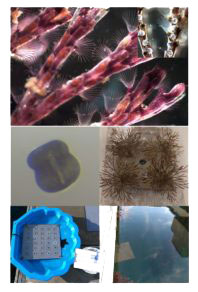Marine Environment
BLAIRGOWRIE YACHT SQUADRON
Maintaining a healthy marine environment
It goes without saying that it is vitally important that we all do everything we can to ensure the health and usability of our unique part of the world. So in addition to encouraging all members and their guests to share the waterways responsibly, BYS has long been committed to maintaining a healthy marine environment.
The BYS Safe harbour redevelopment project was approved following a comprehensive planning process in March 2015. The project is an extension of the existing BYS safe harbour, which was subject to an Environment Effects Act process in the late 1990s. The current harbour operates under an existing Operational Environmental and Sand Management Plan.
Stopping the spread of Marine pests
Marine pests are highly invasive animals and plants from other parts of the world that have become established in Victoria and cause significant harm to the health of marine ecosystems. Many of these invaders arrived in Victoria accidentally, as larvae in ballast water or as adult hitch-hikers on ships that visit the port.
For more information on marine pests, reporting and what you can do to prevent the spread of marine pests visit Parks Victoria here.
Marina Case Study, Monash University
How does larval size affect growth, survival and reproduction in colonies of an attached invertebrate?
The Marine Evolutionary Ecology Group based at Monash University is interested in life history traits, and how these traits influence an organism’s ability to survive. Life history traits are characteristics that occur at stages throughout an organism’s life, and include such things as growth and reproduction.
We commonly use ‘model organisms’ to study ideas about ecology and evolution, and for this project we are using a colonial invertebrate called Bugula neritina that is common at Blairgowrie Yacht Squadron and throughout Port Phillip Bay. Bugula has a ‘tree-like’ growth form and is made up of individual zooids, each with its own feeding apparatus. This means growth can be measured by counting zooids and reproductive output can also be measured because Bugula produces easy to see ovicells that then release larvae.
The project we are currently working on at Blairgowrie Yacht Squadron is investigating how offspring (larval) size affects the growth, survival and reproduction in the bryozoan Bugula neritina, and whether these traits are changing over time.
To conduct the research, we measure the length of 260 larvae, settle them onto small PVC ‘settlement’ plates, and hang them off the marina at Blairgowrie. Over the course of 4 weeks, we measure their growth, reproduction and survival, finally bringing the individuals back to the lab to measure their weight. This cycle is then repeated and we will keep doing this for 5 years.

Top. Bugula neritina is a colonial invertebrate made up of zooids, each with its own filter feeding structure. Inset. When reproductive Bugula produces ovicells (the whitish lumps) where the developing larvae are stored.
Bottom Clockwise from top left. A Bugula larvae (top left) is measured and then placed on a small pvc plate to grow up (top right). These smaller plates are attached to larger panels and are monitored weekly for growth and reproduction (bottom left) before being returned to the water at Blairgowrie Yacht Squadron (bottom right).
Photo credits. Amy Hall, Scott Burgess, Belinda Comerford
